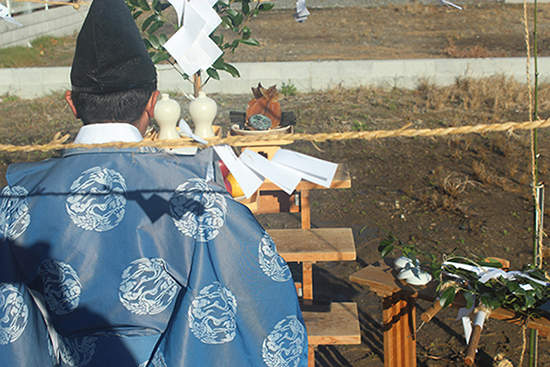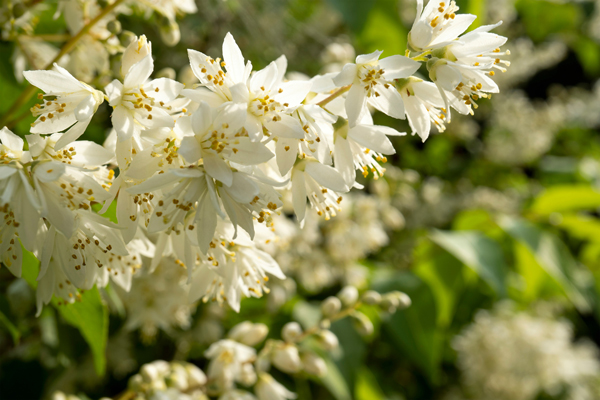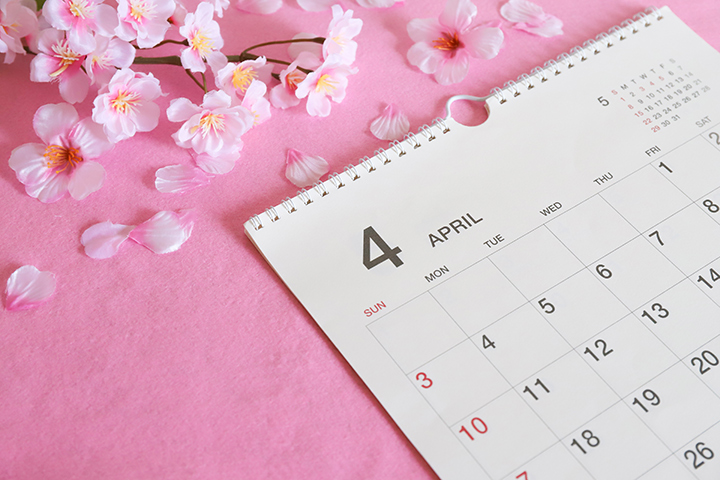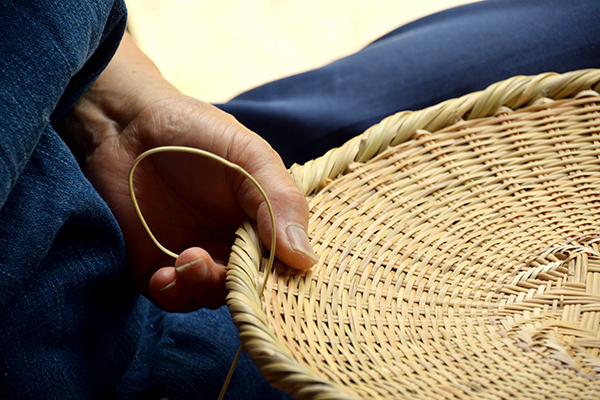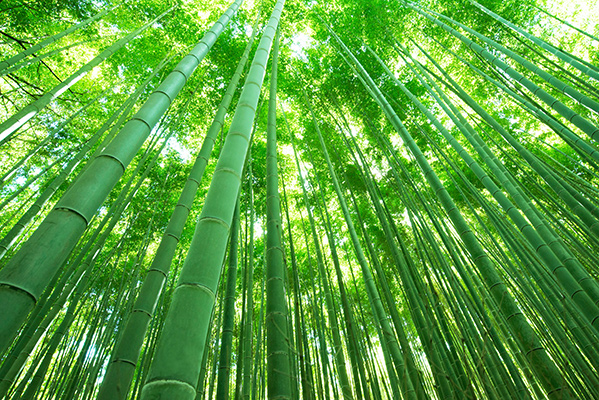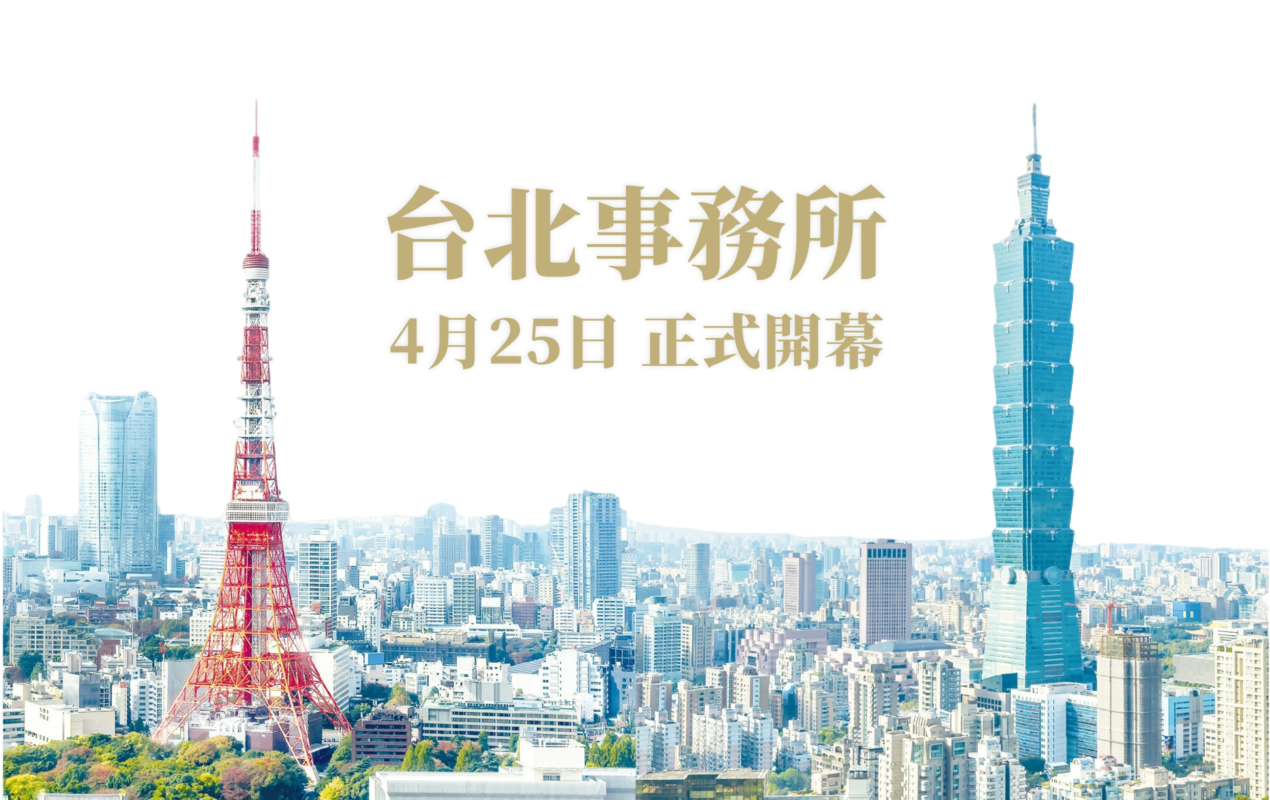Jichin-sai (the ground-breaking ceremony) is a ceremony to pray to the god of the land for the safety of construction work during civil engineering works or when building a house. Praying to the god of the land has the meaning of asking permission to use the land from the guardian deity of the land.
In the past, Jichin-sai was always held when a house was built, but nowadays there are an increasing number of cases where it is not held, as it is up to the owner to decide whether it should be held or not.
It Was Also Practised in Buddhism
Ground-breaking ceremonies have been held since ancient times, even appearing in Japan's oldest historical book, Nihon Shoki (the Chronicles of Japan), but they are not necessarily conducted in the Shinto religion. It is known that Jichin-sai were also practised in Buddhism, as artefacts used in it have been unearthed from the Kondo hall of Todaiji Temple and the Chukondo hall of Kofukuji Temple.
Initially, Jichin-sai ceremonies were held when large buildings were erected, but in the late Edo period they also came to be held when the general public built a new house.
Preparation for the Jichin-sai
The following is an introduction to the preparations required to hold a Jichin-sai and what should be prepared.

Decide the Date of the Event
Jichin-sai cannot be held at random dates. It is common to hold at the time of the Ox (11:00-13:00) on a day that is considered auspicious, such as Taian, Senshou or Tomobiki. Avoid days when the festival is held on a day that is considered auspicious, such as Futsumetsu, Senpu and Sanrinbou (the day of the calamity that may destroy three neighbouring houses).
Especially since Sanrinbo is considered a bad day for construction, it is advisable to check in advance whether the date of the ceremony falls on a day that falls on a bad day for construction. However, the date should be adjusted to suit the convenience of those present, so try to choose a day that is as auspicious as possible.
Preparing Offerings
For Jichin-sai, an altar, sakaki, bamboo, hoe and sand are required, which are usually provided by the building company or shrine. The offerings should consist of one cup each of rice, sake, salt and water, two bottles of sake (with noshi paper), seafood (sea bream with tail head, dried fish such as kelp and surume), and three kinds each of fresh vegetables and fruit.
Types and Meanings of Jichin-sai Rituals
There are many different types of Jichin-sai ceremonies.
The items and flow of a typical ground-breaking ceremony ritual are as follows.
① Shubatsu-no-gi
② Kohjin-no-gi
③ Kensen
④ Norito Sojo
⑤ Shiho-barae
⑥ Jichin-no-gi
⑦ Tamagushi-Houten
⑧ Tessen-no-gi
⑨ Shoshin-no-gi
⑩ Naorai-no-gi
Let's take a look at the meaning of each of these.
Shubatsu-no-gi
A ceremony in which the head priest purifies participants and other items such as Himorogi, Shinsen, Saigu, Tamagushi.
Himorogi is a place other than a shrine where the gods are invited.
Shinsen is a food offered to the gods at festivals.
They are also used to purify the ritual utensils for Jichin-sai and the tamagushi, which is a paper skewer attached to a sakaki tree branch.
Jichin-sai begins with the purification of these items.
Attendees hang their heads slightly to receive the purification.
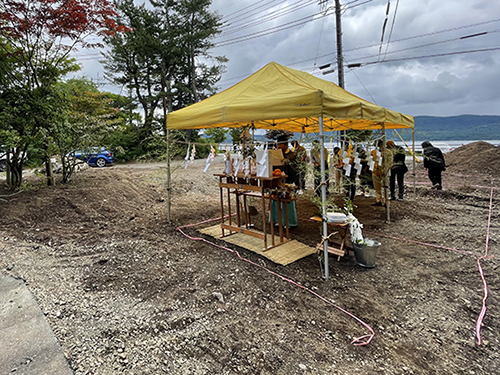
Kensen-no-gi
This is a ceremony in which the lid of the bowl containing the alcohol and water offered to the gods is taken off. It is meant to serve the sake and water to the gods following the offering of the food.
Noritosojo-no-gi
The Shinto priests perform a prayer to the local deities for the safe completion of the construction work.
Shiho barae-no-gi
The land on which the house is to be built is purified, and prayers are made for the safety of the construction work and for no accidents to occur to those involved.
The Shinto priest performs a purification ceremony using a large piece of hemp, and then sprinkles a mixture of paper cut into small rectangular pieces, salt and rice, called Kirinusa, in all four directions.
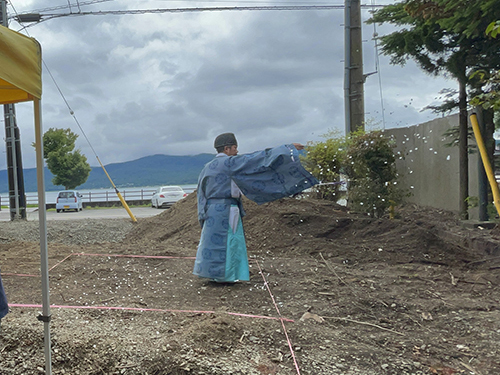
Jichin-no-gi
This ceremony is performed by the client, the owner, and construction workers such as the site supervisor to pray for the safety of the construction work. The builder performs the Karisome and the owner performs the Uguchizome, in the sense of asking for permission for humans to put their hands on the land where the gods reside. The first mowing is done by cutting the grass at the top of the cone-shaped sand with a sickle.
The hoeing is used to break up the sand used for the first mowing. This may be followed by the Horizome-no-gi. This is performed by the builder, who then breaks the ceremonial sand with a hoe to flatten it.
Tamagushi Houten-no-gi
In this ceremony, the tamagushi is offered to the altar in the order of the owner, the designer and the builder. The tamagushi is turned in a clockwise direction, with the base of the tamagushi facing the deity, and the two salutes, two claps and one bow are offered to pray for the safety of the construction work.
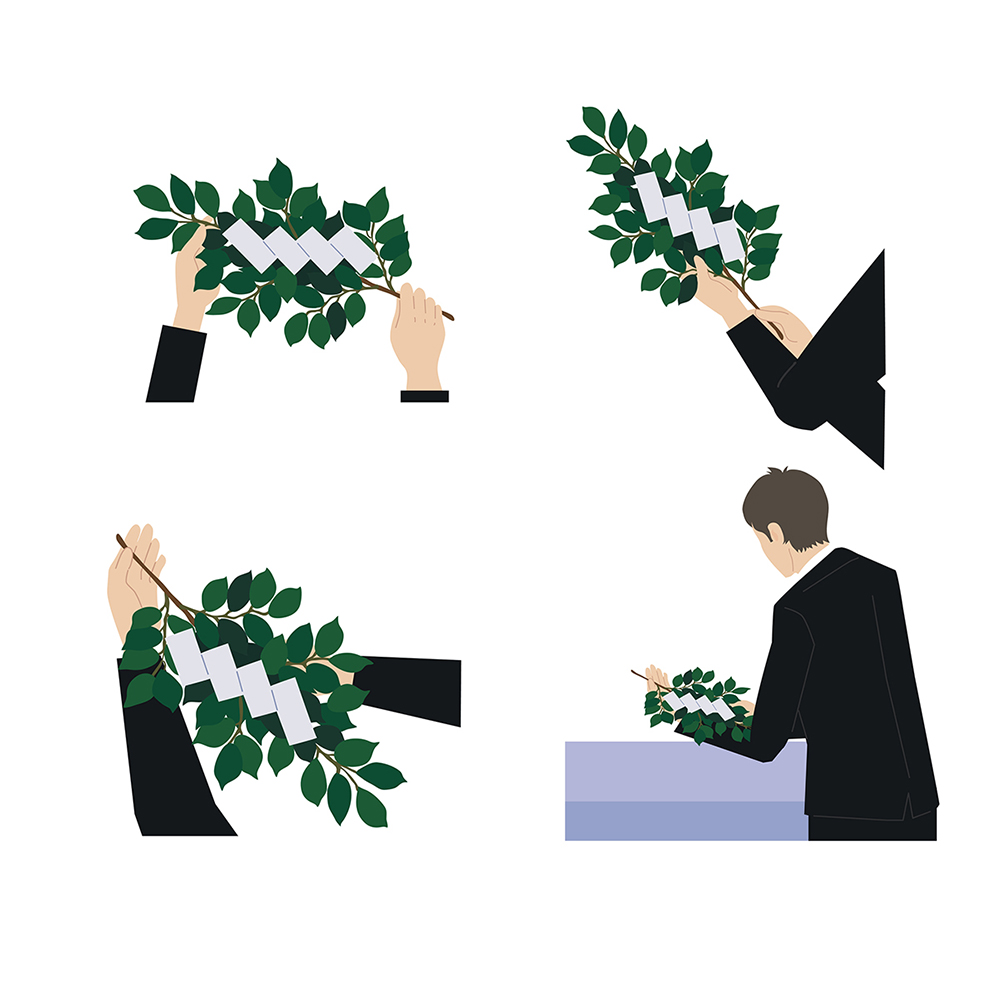
Tessen-no-gi
This is a ceremony in which the priest withdraws the offerings before the deity. Attendees bow their heads while the priest performs the ceremony.
Shoshin-no-gi
This is a ceremony to formally request the deity's return.
While the priest performs the ceremony, all attendees stand up and bow before taking their seats.
Naorai-no-gi
This is a ceremony in which the priest and attendees drink the offering of Mikemiki (a sacred sake) before the deity.
Jichin-sai is led by the owner. The owner, as the representative of the family, performs the ceremony to purify the land on which the house is to be built. If you have the opportunity to participate in the Jichin-sai ceremony, such as when building a new house, you should understand the meaning of each of these traditional ceremonies, which have continued since ancient times in Japan.


